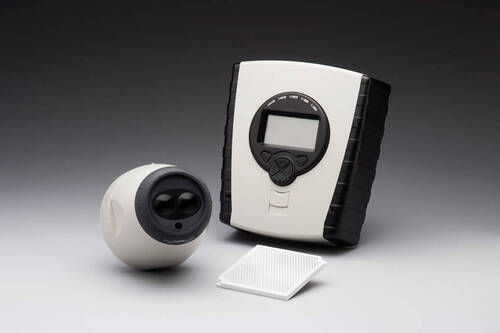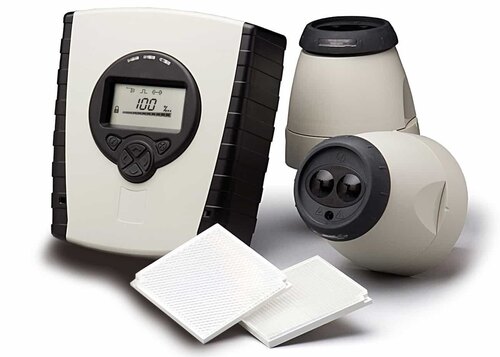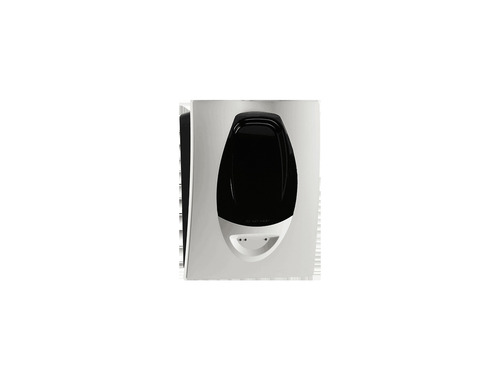- Home Page
- Company Profile
-
Our Products
- Fire Suppression Systems
- FK 5112 Suppression System
- Clean Agent Cylinderless System
- Clean Agent Cylinderless System for Car
- Wind Turbine Fire Detection and Suppression System
- Vehicle Fire Protection System
- Mild Steel Novec 1230 Fire Suppression System
- Fire Extinguishing System For Electrical Cabinets
- Aerosol Fire Suppression System
- Novec 1230 Flooding System
- Hfc 227ea Based Fire Suppression System
- Modular Clean Agent HFC236fa Extinguishers
- Aerosol Based Fire Suppression System
- FM200 Fire Suppression System
- Cylinder Less Tube Based Fire Detection Suppression Systems
- High Voltage Transformer Fire Suppression System
- Hfc227ea Clean Agent Fire Extinguishers
- Novec 1230 Clean Agent Suppression Systems
- Carbon Steel Fm 200 Fire Suppression System
- Direct Tube Based Fire Suppression System
- Novac 1230 Fire Flooding Systems
- Clean Agent Fire Suppression System
- Hfc 227ea Auto Fire Extinguishing System
- Car Fire Protection System
- Fire Suppression For Power Generators
- Hfc227ea Total Flooding System
- Dual Agent Retardant fire Suppression System
- Heat Sensing Tube
- Clean Agent Fire Suppression System for Wind Turbine
- Bus Engine Fire Protection System
- Fire Trace System
- Novec 1230 Fire Suppression System
- SEVO Tubing Suppression System
- Fire Detection And Fire Suppression System
- Heavy Vehicle Fire Suppression Systems
- Fire Sprinkler System Installation Service
- Vehicle Fire Suppression System
- Pre Engineered Fire Suppression System
- Server Rack Fire Suppression System
- Mild Steel Fire Suppression Systems
- Fire Suppression System (Capacitor Panel)
- Electrical Panel Detection Suppression System
- Fire Detection Tube Suppression System
- Fire Extinguishing System For Electrical Panel
- Electrical Panel Gas Suppression System
- Novec 1230 Fire Suppression System for Industrial
- Fm200 Gas Based Fire Suppression Systems
- FM200 Gas Based Fire Suppression Systems For Wind Turbines
- Tube Based Fire Suppression System
- Novec 1230 Fire Gas Suppression System For Electrical Panel
- Novec 1230 Fire Extinguishing System
- Novec 1230 Gas Suppression System For Wind Turbine Fire Suppression System
- Nitrogen Injection Transformer Fire Protection System
- Electrical Panel Fire Suppression System
- Dual Agent Retardant Fire Suppression System
- Diffusible FE36 Fire Suppression System
- Hazardous Cabinets Fire Suppression System
- Chemical Fire Suppression Systems
- Nitrogen NITFP System
- Automatic Fire Detection and Suppression System
- Novec 1230 Fire Suppression Systems
- Fire Suppression For Wind Turbines
- Bladder Tank Proportioning System
- Electrical Panel Fire Suppression
- Fk 5112 Fire Suppression System
- Fire Extinguishing Systems
- Fire Alarms And Detection Systems
- White Addressable Duct Detector
- UV IR Flame Detector
- Agni Sounder Hooter
- Addressable Fire Alarm System
- Fire Alarm System Amc Service
- Conventional Fire Alarm System
- Digital Addressable Fire Alarm System
- Aspirating Systems Smoke Detectors
- Agni Addressable Security Fire Alarm
- Fire Detection And Fire Alarm System
- Uv Ir Flame Detector System
- Ravel 2 zone Conventional Fire Alarm System
- Addressable Photoelectric Duct Detector
- Fire Alarm Sounder
- Fire Response Indicator
- Vesda Aspirating Smoke Detection System
- 4 Zone Addressable Fire Alarm System
- Ravel 4 zone Conventional Fire Alarm System
- Fire Detection Fire Alarm System
- Co2 Flooding/Suppression System
- High Pressure Co2 Automatic Fire Extinguishing System
- Co2 Gas Fire Suppression System
- CO2 Suppression System
- CO2 Fire Flooding
- ELECTRICAL PANEL CO2 FLOODING SYSTEM
- Automatic Pipeline Co2 Fire Suppression System
- Co2 Fire Flooding System
- Co2 Cylinder Fire Suppression System
- In Direct CO2 Flooding System
- Co2 Based Fire Suppression Systems
- Automatic Co2 Flooding System
- Automatic CO2 Flooding System
- Gas Based Co2 Flooding System
- Automatic Pipeline CO2 Fire Suppression System
- Co2 Fire Suppression System
- Passive Fire Protection
- Fire Extinguishers
- Twin Trolley Type Fire Extinguisher
- Co2 Fire Extinguisher Refilling Service
- Clean Agent Type Fire Extinguisher
- Amc For Fire Fighting System
- Co2 type fire Extinguisher
- Mild Steel Wet Chemical Fire Extinguisher
- Carbon Steel Abc Fire Extinguisher
- Automatic Ceiling Mounted D Type Fire Extinguisher
- Water Spray Sprinkler Systems
- Kanex Fire Extinguishers
- Fe36 Clean Agent Fire Extinguisher
- Modular Dry Chemical Powder Extinguishers
- Kitchen Fire Suppression System
- Kitchen Fire Suppression System
- Mild Steel Kitchen Fire Suppression
- Kitchen Hood Fire Suppression System
- Automatic Kitchen Fire Extinguishing System
- Kitchen Fire Extinguisher
- kitchen Nozzle Fire Suppression System
- Restaurant Kitchen Fire Suppression System
- Fire Suppression System For Commercial Kitchen
- Commercial Kitchen Fire Suppression System
- HW & MV Fire Protection System
- Commercial Gas Leak Detector
- Medium Velocity Water Spray System (MVWS)
- Transformer Fire Protection System
- Transformer Fire Prevention System
- Transformer Fire Suppression Systems
- Conveyor belt system fire protection system
- Nitrogen Injection Fire Protection System For Transformer
- High Velocity Water Spray System (HVWS)
- Fire Suppression Accessories
- Fire Hydrant System
- Clean Agent Gas Refilling
- Fire Fighting Foams
- Smoke Detector
- Ravel Beam Smoke Detector
- Addressable Photoelectric Smoke Detector
- Addressable Smoke Detector
- Fire Alarm Addressable Smoke Detector
- Battery Addressable Smoke Detector
- Polycarbonate Smoke Detector
- Agni Smoke Detector
- Conventional Optical Smoke Detectors
- Addressable Duct Smoke Detector
- Agni Wireless Smoke Detector
- White Polycarbonate Smoke Detector
- Manual Call Point
- Fire Retardant Fabric
- Fire Alarm Control Panel
- Heat Detector
- Beam Detectors
- Fire Door
- HW&MV Fire Protection
- Fire Cable Coating
- Fire Cable
- Public Address Systems
- Hydraulic Hose
- Fire Suppression Systems
- Contact Us

IR Beam Detector
35000 INR/Piece
Product Details:
X
IR Beam Detector Price And Quantity
- 50 Piece
- 35000 INR/Piece
- 34500.00 - 35000.00 INR/Piece
IR Beam Detector Trade Information
- Cheque
- Asia
- All India
Product Description
An IR (Infrared) beam detector is a type of sensor device used to detect the presence or interruption of an infrared beam. These detectors are commonly used in various applications such as security systems, automation, and industrial processes.
Here's how they typically work and where they are used:
Working Principle:
- IR beam detectors consist of two main components: an infrared emitter (transmitter) and an infrared receiver.
- The emitter emits an infrared beam of light, typically in the form of an invisible IR light source.
- The receiver, placed at a certain distance from the emitter, is designed to detect this emitted infrared light.
- When the infrared beam is unobstructed and reaches the receiver, the detector considers the beam to be "intact," and no alarm is triggered.
- If an object or person obstructs the infrared beam path between the emitter and receiver, the detector registers a break in the beam, signaling an event or alarm.
Applications:
- Security Systems: IR beam detectors are commonly used in security systems to create an invisible barrier that, when crossed, triggers an alarm or alerts security personnel. For example, they can be used to protect windows, doors, or fence lines.
- Automation: IR beam detectors are used in automation and control systems to detect the presence or position of objects on conveyor belts, assembly lines, and other industrial processes. They can be used to trigger actions such as stopping a machine or diverting a product.
- Access Control: In access control systems, IR beam detectors can be used to sense when a person or vehicle approaches a gate or barrier. They can be used to automatically open or close gates or doors.
- Photography: In photography, IR beam detectors can be used as triggers to capture fast-moving objects or wildlife. When the beam is interrupted by the subject, it triggers the camera to take a shot.
- Safety Systems: In industrial environments, IR beam detectors can be used as safety devices to ensure that a machine or equipment is not operated if there is an obstruction in its working area.
- Traffic Management: IR beam detectors are used in traffic control systems to monitor vehicle presence at intersections or toll booths. When a vehicle breaks the beam, it triggers traffic lights or toll collection.
Types:
- There are various types of IR beam detectors, including single-beam and dual-beam detectors. Dual-beam detectors are more resistant to false alarms caused by small objects or environmental conditions like rain and fog.
Considerations:
- Environmental Factors: Extreme weather conditions, such as heavy rain or fog, can affect the performance of IR beam detectors.
- Alignment: Proper alignment of the emitter and receiver is crucial for reliable operation.
- Range: The range of the IR beam should be selected based on the specific application requirements.
FAQ:
Q. What is an IR beam detector?
Ans: An IR beam detector is a sensor device that uses infrared technology to detect the presence or interruption of an infrared beam. It consists of an infrared emitter (transmitter) and an infrared receiver.
Q. How does an IR beam detector work?
Ans: An IR beam detector works by emitting an invisible infrared beam from the transmitter to the receiver. When this beam is unobstructed, no alarm is triggered. If an object or person interrupts the beam, it triggers an event or alarm.
Q. What are the common applications of IR beam detectors?
Ans: IR beam detectors are used in various applications, including security systems, automation, access control, photography, industrial safety, and traffic management.
Q. What is the difference between a single-beam and a dual-beam IR detector?
Ans: A single-beam IR detector uses one emitter and one receiver. It is suitable for applications where simplicity is essential but may be more susceptible to false alarms. A dual-beam IR detector uses two emitters and two receivers, making it more resistant to false alarms caused by small objects or environmental conditions like rain and fog.
Q. What factors can affect the performance of IR beam detectors?
Ans: Environmental factors such as heavy rain, fog, or extreme temperatures can affect IR beam detectors' performance. Proper alignment of the emitter and receiver is crucial, and the selected range should match the specific application requirements.
Q. Are IR beam detectors suitable for outdoor use?
Ans: Yes, IR beam detectors can be used outdoors, but their performance may be influenced by weather conditions. Dual-beam detectors are often preferred for outdoor applications due to their increased reliability.
Q. Can IR beam detectors be used in conjunction with other security or automation systems?
Ans: Yes, IR beam detectors can be integrated into larger security or automation systems. They can trigger alarms, activate cameras, control access gates, or stop machinery in response to detected events.
Q. Do IR beam detectors require regular maintenance?
Ans: IR beam detectors typically require minimal maintenance. However, periodic checks for alignment, cleanliness, and any obstructions in the beam path are recommended to ensure reliable operation.
Q. Are IR beam detectors pet-friendly?
Ans: Some IR beam detectors can be configured to be pet-friendly by adjusting their sensitivity settings. This prevents false alarms caused by small animals while still detecting human intruders.
Q. What is the range of IR beam detectors?
Ans: The range of IR beam detectors can vary widely, from a few feet to several hundred feet, depending on the specific model and application requirements. It's important to select a detector with an appropriate range for the intended use.
Q. Can IR beam detectors work in complete darkness?
Ans: Yes, IR beam detectors can operate in complete darkness since they rely on infrared light, which is invisible to the human eye.
Tell us about your requirement

Price:
Quantity
Select Unit
- 50
- 100
- 200
- 250
- 500
- 1000+
Additional detail
Mobile number
Email
Other Products in 'Beam Detectors' category
" We mainly want inquiries from Gujarat, Rajasthan, Madhya Pradesh, Maharashtra, Goa. "





 English
English Spanish
Spanish French
French German
German Italian
Italian Chinese (Simplified)
Chinese (Simplified) Japanese
Japanese Korean
Korean Arabic
Arabic Portuguese
Portuguese